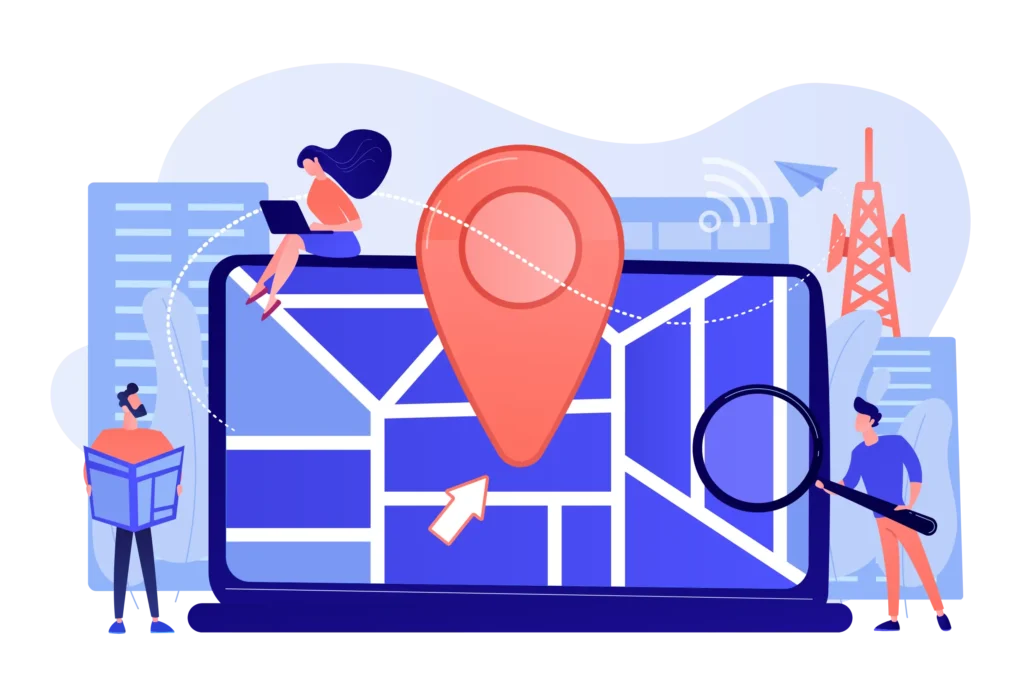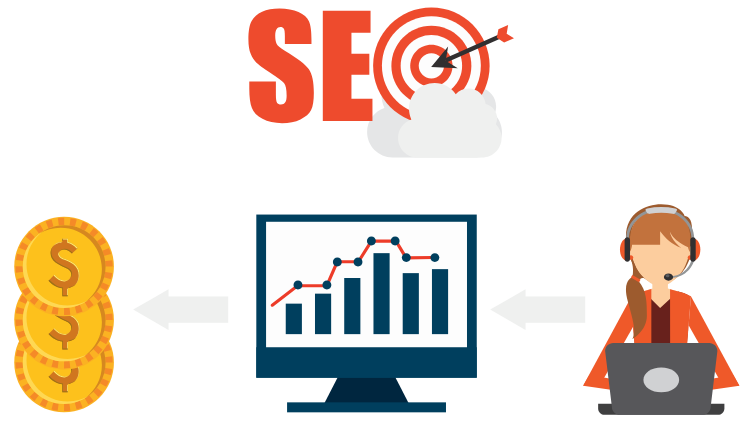Local SEO Services That Help You Show Up Where It Matters Most
Because if your customers can’t find you, the rest doesn’t matter, does it?

What Is Local SEO?
Let’s be honest—Local SEO can sound a bit abstract at first. But at its core, it’s pretty simple.
Local SEO is how your business becomes visible to people searching nearby. When someone types “accountant near me” or “best dog groomer in [your city],” this is what decides whether they see your business or someone else’s.
If you want those customers? You need to show up. Not someday—now.
That’s what we help with.
Whether you’re running a one-person business or managing multiple locations, our local SEO services are designed to get your business found. We do the work behind the scenes—cleaning up listings, improving your search presence, and helping you look as reliable online as you are in real life.
What Our Local SEO Services Include
Local Citation SEO
We fix inconsistent or outdated business information across online directories. Google loves clean, consistent listings—and so do customers.
On-Page Local SEO
We tweak your website with the right local keywords and structure to help it rank better in your specific area.
Review Strategy Support
Need more (good) reviews? We’ll help you set up simple ways to collect and manage them, which makes a difference both in rankings and trust.
Local Link Building
We build meaningful local backlinks and directory listings that support long-term growth, not spammy stuff that could hurt you later.
Local SEO Strategy & Reporting
Each business is different. We tailor the plan to your goals, your competition, and your service areas. Using Generative AI, we analyze large volumes of local data quickly, giving us sharper insights into what’s working and where to adjust. Then we track the results together.
Generative AI-Enhanced SEO Insights
We use Gen AI to analyze local search trends, uncover keyword opportunities, and support data-driven decision-making—so your strategy is smarter, faster, and always ahead of the curve.
Our track record is so long, it’s getting hard to keep track.
Our local SEO services are a fit for:
- Local service providers (contractors, lawyers, dentists, realtors…)
- Brick-and-mortar businesses
- Franchises and multi-location brands
- Professionals with service areas (like consultants or therapists)
- Any business that depends on local traffic or calls
If you’ve ever wondered why a competitor appears first in search, this is probably the missing piece.

Local SEO Services With Transparent Pricing and Real Results
You’re probably here because your business isn’t appearing in local search results like it should. Or maybe you’re just tired of overpriced, overhyped SEO local plans that promise the moon but barely deliver shadows. We hear you. And more importantly, we built our Local SEO services to fix that.
Let’s keep it honest, clear, and results-focused.

Straightforward Local SEO Pricing — No Games, No Lock-Ins
We don’t trap you in contracts. We don’t pitch fairy-tale outcomes. Instead, we offer affordable local SEO services built around your needs. You’ll know what you’re paying for, why it matters, and how it’ll move the needle.
Here’s a breakdown of our flexible plans:
Starter
Ideal for solo entrepreneurs, small offices, or a single-location business. This one’s your foundation.
40+ Citation Fixes and Submissions
Consistency across directories is a big trust signal for search engines. We fix that.
Basic On-Page Local SEO
Simple optimizations that make your website more “local” and more findable.
Monthly Reporting
Know what’s happening, every step of the way.
Email Support
Questions? We’re here. Simple.
$450/month
Growth
Designed for growing businesses in competitive markets where just existing isn’t enough anymore.
80+ Citations Across High-Authority Directories
You’re building presence. We make it loud.
Local Link Outreach
Backlinks that matter—contextual, local, and powerful.
2 Geo-Targeted Blog Posts/Month
Content that speaks to your audience where they are.
Competitor Tracking
Know what your rivals are doing. Then do it better.
Review Strategy Setup
Turn customers into advocates—build that local trust fast.
$750/month
Premium
Franchises, agencies, complex operations—we've got you.
100+ Citations Across High-Authority Directories
Your presence will soar to new heights, and visibly speak for itself.
Tailored Strategy Per Location
Every market behaves differently. So we treat them differently.
Multi-Location Citation Management
Management Scaled accuracy, one dashboard.
Priority Support
You’re not waiting in line.
Dedicated Local SEO Consultant
Yes, a real person. Working with you. Month in, month out.
$1,200/month
Just Need a One-Time Audit?
We get it. Sometimes, you just want a local citation SEO tune-up or clarity before making a long-term move. Ask us for a flat-fee local SEO audit, and we’ll dive deep into your setup. No strings.
Let’s Get You Found—Because Visibility Isn’t Optional
Whether you’re a cozy coffee shop in a corner block or a regional service provider with multiple locations, local SEO for small businesses is no longer optional. It’s essential.
We help businesses that feel invisible finally show up where it matters: Maps. Search. Real customer queries.
We’re not here to hard sell. We don’t lock you in. And frankly, we don’t do fluff. Our approach to local business SEO is simple, effective, and built to last.


What Makes Our Local SEO Company Different?
Let’s be real—there are hundreds of SEO firms out there. So why partner with us?
Well, we focus on just one thing: helping local businesses get found online.
- No bloated packages.
- No vague deliverables.
- Just local SEO services that deliver real results.
We’re not here to sell you on hype. We’re here to show you what works. When you choose us, you’re choosing a team that understands how local search behaves. One who knows when Google changes, what citation directories matter, and how to optimize for hyper-specific terms in your neighborhood. We leverage Generative AI to enhance our SEO processes—not to generate bulk content, but to uncover trends, optimize for local relevance, and support faster strategic pivots. It’s AI with a human brain steering the wheel.
Services Built Around Real-World Needs
Every part of our process was built with business owners in mind. Let’s walk through a few of our core services.
Citation Audits
We comb through your current listings—Google, Yelp, industry directories—and flag inconsistencies. You’d be surprised how often a wrong address or outdated phone number holds a business back.
Citation Building
After fixing what’s broken, we go wide. Your info is submitted to relevant, high-authority directories to establish presence and trust with search engines.
Citation Cleanup
Outdated listings? Duplicate entries? We clean them up. Because bad data = bad ranking potential.
Comprehensive Local SEO Campaigns
Keyword research, geo-targeted content, technical tweaks, and everything in between. This is the all-in-one plan for those who want to build momentum—and keep it going.

Local SEO Isn’t One-Size-Fits-All
That’s why we tailor everything. Here’s how we think about it:
For Small Businesses
You’re tight on time, and maybe budget too. Our affordable local SEO services are lean, targeted, and smart—designed to stretch every dollar.
For Agencies
We offer white-label solutions that integrate seamlessly with your existing client offerings. Need support behind the scenes? We’ve got your back.
For Enterprises
Multiple locations. Multiple teams. One consistent strategy. Our Local SEO company ensures each branch performs optimally, without siloing results.
Work With a Local SEO Consultant Who Gets It
This part’s personal. When you work with us, you get more than a platform—you get a partner.
You’ll be assigned a local SEO expert who learns your goals, your market, and your quirks. This isn’t cookie-cutter. This is collaboration.
Many of our clients say, “You feel like part of the team.” And that’s exactly how we want it to feel.
Still Wondering If It’s Worth It?
Here’s the thing—if people are already searching for what you offer nearby, you don’t need to create demand. You just need to capture it.
And that’s what local SEO services are built for.

FAQs
Generally, we start seeing movement in 2–4 months. It’s not instant, but it sticks when it kicks in.
No. And honestly, anyone who does is likely cutting corners. We build sustainable, long-term growth.
Not quite. It’s a good start, but you’ll need citations, backlinks, reviews, and on-page optimization to compete.
Yes. Whether you’re in New York, London, or a small town in the Midwest, we offer remote local SEO services across the U.S., Canada, and the UK.